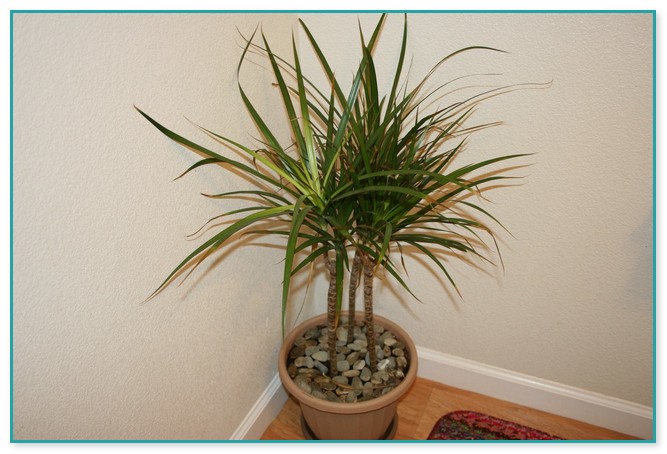Table Of Content

The feathered leaves produce eye-catching foliage that livens up a room, office, or entrance-way. Some types of palms, such as the bamboo palm, have a bushy appearance with slender stems. Other exotic palms, like the ponytail palm, have long thin leaves and thick woody stems. This palm (Caryota mitis), named for the distinctive shape of its broad leaves, is one of the more difficult palms to keep alive, particularly indoors.
Common Indoor Palm Plant Problems: Brown Tips
Warm temperatures and humidity are not a problem for the majority of palms. The bigger concern for these trees is protection from cold snaps and unseasonable temperature drops. Learn to plant and grow a palm tree with our easy guide to caring for these tropical beauties. In general, the plants stay a manageable size, so you shouldn't have to repot it more often than every other year. If your potting media breaks down and becomes mucky or sponge-like, repot your plant to prevent root rot.
Ponytail Palm Care: How to Grow Ponytail Palm Plants Indoors - Bob Vila
Ponytail Palm Care: How to Grow Ponytail Palm Plants Indoors.
Posted: Wed, 12 Jul 2023 07:00:00 GMT [source]
Your Complete Guide to Indoor Plant Maintenance
These 7 Super Low-Maintenance Indoor Plants Almost Seem to Thrive on Neglect - Better Homes & Gardens
These 7 Super Low-Maintenance Indoor Plants Almost Seem to Thrive on Neglect.
Posted: Thu, 07 Sep 2023 07:00:00 GMT [source]
Palm plants originate from tropical and subtropical climates; currently, there are about 200 genera with more than 2,600 species. Even though indoor palm plants are pricy, their benefits have always outweighed the cost. All types of palms—Chinese fan palms, cat palms, ponytail palms—need to grow in well-draining, light soil. The best kind of potting mix for palms should be a mixture of soil, peat moss, and perlite or shredded bark. Organic-rich material, such as peat moss, holds moisture and also provides plenty of nutrients.
Yucca Palm (Yucca elephantipes)
They dislike being repotted and are sensitive to prolonged periods of direct sunshine. The Chinese Fan Palm, like other palms, requires adequate drainage. Young plants should be protected from direct sunlight, but established plants can tolerate the light just fine.
Not only is the European fan palm (Chamaerops humilis) aesthetically pleasing, but it is also one of the best palm plants to grow indoors. Its habit consists of fine-textured blue-green or silver-green fronds that grow upward and spread in a circle at a 300-degree angle, per Gardenia. The Pygmy date palm (Phoenix roebelenii), otherwise known as the feast date palm or roebelenii palm, is one of the best palm plants to grow indoors. According to North Carolina State University, it is ideal for cooler climates, growing between 4 to 6 feet tall and spanning 5 feet wide. According to The Spruce, majesty palm (Ravenea rivularis) is the ideal houseplant because it is slow-growing and shade tolerant. Since it can grow up to 10 feet tall indoors, it can serve as a feature tree, focal point, or green architectural element for any room.
JOIN OUR GARDEN CLUB
As a houseplant, it prefers a north or east-facing window and moist, well-draining, fertile soils. Native to the Philippines, this ornamental palm variety produces red-colored fruits in winters. They give a decorative look to the plant, especially during the holiday season. It quickly reaches up to 6 feet in height and grows slowly post that. “Palms can get spider mites and mealybugs, which are tough to eradicate,” O’Gwin says.
Indoor Container Gardening for Beginners: How to Get Started
Attempt to cut off the affected area, but know that it may be too late at this point to save the plant. The plants aren't clumping by nature but grown in clumps for aesthetic reasons. In general, home growers should buy a new plant rather than attempt propagation. These plants are almost always propagated from seed by professional growers. Parlor palms can live for a few decades as an indoor tree and even longer outdoors in the right climate.
How to Grow Indoor Citrus Trees: A Comprehensive Guide
In fact, many palms grow best in slightly sandy soils with ample drainage. Never let a palm's root ball sit in water and allow the plant's soil to dry out in between waterings. The best soil for palm plants is a loose, porous mixture, like a combination of peat moss, leaf mold, and shredded bark.

Do not shake as this can disturb the existing root structure, making the plant weaker. Position the tree in the hole, making sure that the top part of the root ball is not buried in the soil. Straighten the tree and fill the hole with the soil you have earlier dug. After choosing the variety to plant and the location, now is the time to get your hands dirty! Position the plant next to the hole so that you have an idea of how big is it that you need to dig.
Cascade palms enjoy a well-draining, evenly moist soil, bright light, medium to high humidity, and occasional feedings. The majesty palm has a classic, elegant look, sturdy trunk, and a spray of lush, dark green foliage. It requires moist conditions, any acidic potting mix ideal for succulents, and a moist, well-draining soil.
Palms often have shallow root systems and do not appreciate being disturbed frequently. Potassium deficiency is especially common in palms and can result in yellowing or brownish fronds. You can also choose to plant your palm in a vessel made from terracotta or clay to help wick excess moisture from the soil.
Unlike some indoor plant trees, the kentia palm doesn’t grow too large. Keeping the soil moist and the air humid is the best way to prevent browning palm leaf tips. Indoor palm plants are excellent for bringing some of the tropics into your home. Most types of palm houseplants have arching fronds with thin pointed leaflets on each stem.
No comments:
Post a Comment